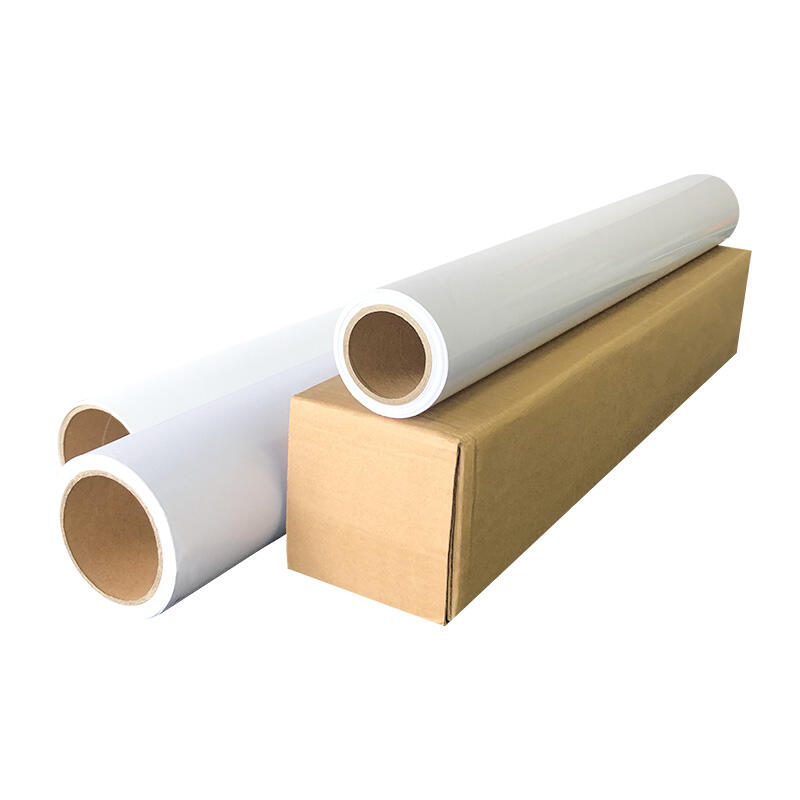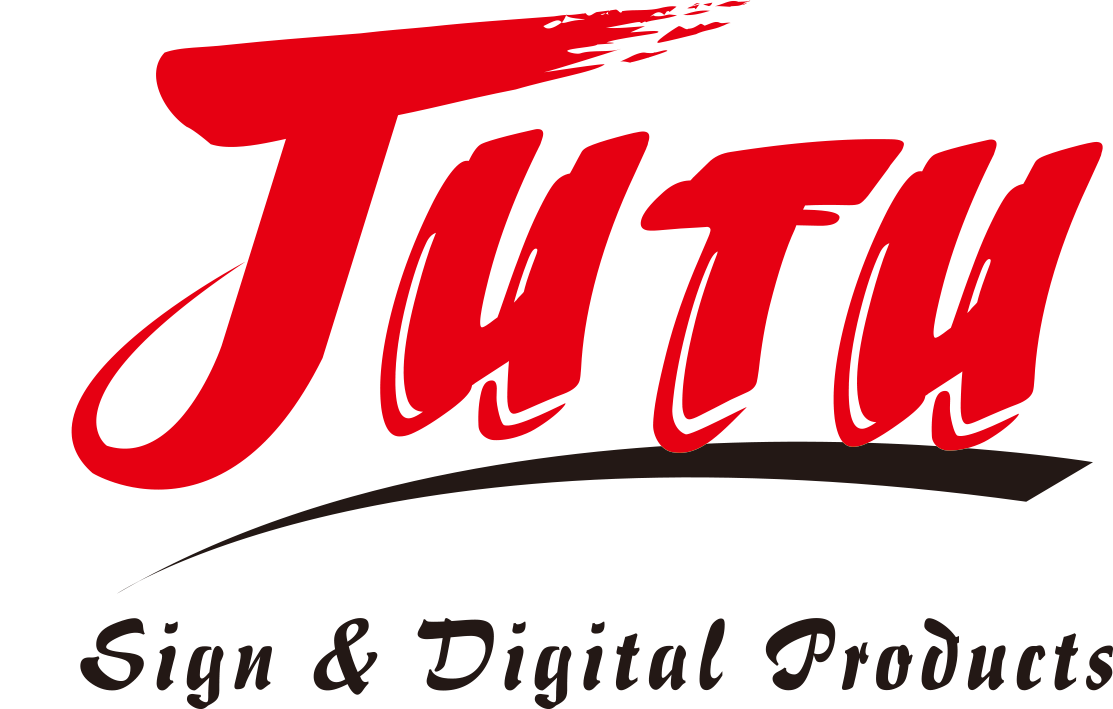Digital printing technology has revolutionized the vinyl industry, creating unprecedented opportunities for businesses across multiple sectors. From custom signage to personalized apparel, the demand for high-quality vinyl materials continues to surge as brands seek cost-effective ways to enhance their visual identity. Understanding the various types of vinyl available and their specific applications enables businesses to make informed decisions that maximize both aesthetic appeal and operational efficiency. Modern vinyl solutions offer superior durability, vibrant color reproduction, and versatile application methods that cater to diverse commercial requirements.

Understanding PVC Heat Transfer Vinyl Properties
Material Composition and Structure
PVC heat transfer vinyl represents a specialized category of polyvinyl chloride material engineered specifically for thermal application processes. The manufacturing process involves creating thin, flexible sheets with pressure-sensitive adhesive backing that activates under controlled heat and pressure conditions. This unique composition ensures optimal adhesion to various substrate materials while maintaining flexibility and durability throughout the application lifecycle. The molecular structure of pvc heat transfer vinyl provides excellent resistance to environmental factors including UV exposure, moisture, and temperature fluctuations.
Advanced manufacturing techniques incorporate plasticizers and stabilizers that enhance the material's workability and longevity. These additives prevent cracking, fading, and premature degradation that can compromise the visual integrity of finished applications. The controlled thickness specifications typically range from 80 to 120 microns, providing the optimal balance between conformability and structural integrity required for professional-grade installations.
Performance Characteristics and Benefits
The performance profile of pvc heat transfer vinyl encompasses multiple critical factors that determine application success. Temperature resistance capabilities extend from -40°C to +80°C, ensuring reliable performance across diverse climate conditions and indoor environments. The material exhibits excellent dimensional stability, preventing shrinkage or expansion that could affect graphic alignment or adhesion quality over time. Chemical resistance properties protect against common cleaning agents, oils, and atmospheric pollutants that might otherwise compromise material integrity.
Color retention technology embedded within modern pvc heat transfer vinyl formulations maintains vibrant appearance for extended periods, typically exceeding five years under normal usage conditions. The smooth surface finish facilitates precise cutting operations and clean weeding processes, essential for intricate design work and detailed graphics. These performance characteristics make pvc heat transfer vinyl particularly suitable for applications requiring long-term durability and consistent visual appeal.
Digital Printing Technologies for Vinyl Applications
Solvent-Based Printing Systems
Solvent-based digital printing represents the gold standard for outdoor vinyl applications requiring maximum durability and weather resistance. These systems utilize eco-solvent or mild-solvent inks that chemically bond with vinyl surfaces, creating prints that withstand harsh environmental conditions for up to seven years. The printing process involves precise ink droplet placement controlled by advanced piezoelectric printheads, ensuring exceptional color accuracy and gradient reproduction. Temperature and humidity controls during printing optimize ink curing and prevent color bleeding or adhesion issues.
Modern solvent printers incorporate automated media handling systems that accommodate various vinyl widths and weights, streamlining production workflows for high-volume applications. Color management profiles specifically calibrated for different vinyl substrates ensure consistent output quality across production runs. The ability to print on uncoated vinyl materials expands application possibilities while reducing material costs compared to pre-treated alternatives.
UV-Curable Printing Technology
UV-curable printing technology offers immediate curing capabilities that significantly accelerate production timelines while delivering exceptional print quality on pvc heat transfer vinyl substrates. The instant polymerization process triggered by UV light exposure creates extremely durable prints with superior scratch and chemical resistance. This technology excels in applications requiring precise color matching and fine detail reproduction, making it ideal for commercial signage and branded graphics.
The low-temperature curing process preserves vinyl dimensional stability and prevents heat-related distortion that might occur with alternative printing methods. UV inks demonstrate excellent adhesion properties on various vinyl formulations, eliminating the need for specialized primers or surface treatments. Energy efficiency advantages of UV printing systems contribute to reduced operational costs while maintaining consistent quality standards throughout production cycles.
Vinyl Application Methods and Techniques
Heat Press Application Procedures
Heat press application represents the most common method for applying pvc heat transfer vinyl to textile substrates and other heat-sensitive materials. The process requires precise temperature control, typically ranging from 150°C to 170°C, combined with appropriate pressure settings and dwell times to achieve optimal adhesion. Pre-heating the substrate removes moisture and prepares the surface for vinyl application, while post-application cooling under pressure ensures complete adhesive activation and prevents lifting or bubbling.
Professional heat press equipment incorporates digital temperature controllers, pressure gauges, and programmable timers that eliminate guesswork and ensure consistent results. The selection of appropriate release papers and protective films prevents contamination and facilitates clean vinyl transfer. Proper technique involves gradual pressure application and controlled release to prevent substrate distortion or vinyl displacement during the bonding process.
Cold Application and Lamination
Cold application methods utilize pressure-sensitive adhesives that bond effectively at ambient temperatures, making them suitable for temperature-sensitive substrates and large-format installations. This approach requires careful surface preparation including cleaning, degreasing, and ensuring optimal ambient conditions for adhesive performance. Sequential application techniques prevent air entrapment and ensure uniform adhesion across the entire vinyl surface.
Lamination processes protect printed vinyl surfaces from UV degradation, abrasion, and chemical exposure while enhancing overall appearance quality. Clear protective films designed specifically for pvc heat transfer vinyl applications maintain optical clarity while providing barrier protection against environmental hazards. The lamination process must account for differential expansion rates between vinyl and protective layers to prevent delamination or wrinkling over time.
Industry Applications and Market Segments
Automotive and Transportation Graphics
The automotive industry represents one of the largest consumers of specialized vinyl materials, utilizing pvc heat transfer vinyl for vehicle wraps, fleet graphics, and interior trim applications. Automotive-grade formulations incorporate enhanced conformability that accommodates complex curved surfaces and deep recesses without compromising adhesion or appearance quality. The material must withstand extreme temperature variations, road salt exposure, and mechanical stresses associated with vehicle operation.
Fleet graphics applications demand consistent color matching across multiple vehicles and extended service life to maximize return on investment. Removability characteristics ensure that vinyl graphics can be updated or replaced without damaging underlying paint surfaces, maintaining vehicle resale value. Specialized adhesive formulations provide strong initial tack while allowing repositioning during installation and clean removal when replacement becomes necessary.
Retail and Commercial Signage
Retail environments utilize pvc heat transfer vinyl for window graphics, promotional displays, and wayfinding systems that must maintain professional appearance while withstanding constant exposure to lighting and climate control systems. The material's ability to accept detailed cutting and weeding operations enables creation of intricate logos and text elements essential for brand identity applications. Fire retardancy requirements in commercial spaces necessitate specialized vinyl formulations that meet building code specifications.
Point-of-purchase displays and seasonal promotional graphics benefit from the ease of application and removal that characterizes modern pvc heat transfer vinyl systems. The ability to produce short-run custom graphics economically enables retailers to respond quickly to market trends and promotional opportunities. Color consistency across different production batches ensures brand identity integrity throughout multi-location retail installations.
Quality Control and Performance Testing
Adhesion Testing Protocols
Comprehensive adhesion testing ensures that pvc heat transfer vinyl applications meet performance expectations under real-world conditions. Standard test procedures include initial tack measurements, peel strength evaluations after specified aging periods, and accelerated weathering tests that simulate years of environmental exposure in compressed timeframes. These protocols identify potential failure modes and validate adhesive performance across different substrate materials and application conditions.
Temperature cycling tests evaluate adhesive stability under thermal stress conditions that might occur in transportation or outdoor applications. Humidity resistance testing confirms material performance in high-moisture environments, while chemical exposure tests validate resistance to cleaning agents and atmospheric pollutants. Documentation of test results provides quality assurance data that supports warranty claims and customer confidence in material performance.
Print Quality Assessment
Print quality evaluation encompasses multiple parameters including color accuracy, resolution capabilities, and long-term color stability under various exposure conditions. Spectrophotometric analysis provides objective measurement of color differences and enables creation of accurate color profiles for consistent reproduction across different printing systems. Accelerated fade testing utilizing controlled UV exposure simulates years of outdoor weathering to predict actual service life expectations.
Surface finish analysis evaluates print uniformity, ink adhesion quality, and potential defects that might affect appearance or durability. Microscopic examination reveals ink penetration characteristics and identifies any surface irregularities that could compromise performance. These quality control measures ensure that printed pvc heat transfer vinyl materials meet specified standards for commercial applications requiring professional appearance and extended service life.
Future Trends and Technology Developments
Sustainable Material Innovations
Environmental consciousness drives development of eco-friendly pvc heat transfer vinyl alternatives that maintain performance characteristics while reducing environmental impact. Bio-based plasticizers and recyclable formulations address sustainability concerns without compromising material properties essential for commercial applications. Closed-loop recycling programs enable recovery and reprocessing of used vinyl materials, reducing waste streams and supporting circular economy principles.
Solvent-free manufacturing processes eliminate volatile organic compound emissions while maintaining product quality standards. Water-based adhesive systems provide environmentally responsible alternatives for applications where traditional solvent-based formulations might raise environmental concerns. These innovations respond to increasing regulatory requirements and customer preferences for sustainable business practices throughout the vinyl supply chain.
Advanced Functionality Integration
Smart vinyl technologies incorporate electronic components and conductive materials that enable interactive applications beyond traditional graphics and signage. Embedded sensors, LED integration, and near-field communication capabilities transform static vinyl applications into dynamic communication platforms. These advanced materials require specialized manufacturing processes and installation techniques that extend beyond conventional pvc heat transfer vinyl applications.
Antimicrobial surface treatments address hygiene concerns in healthcare, food service, and public spaces while maintaining aesthetic appeal and durability characteristics. Shape-memory materials enable self-healing properties that repair minor surface damage and extend service life in high-traffic applications. These technological advances position vinyl materials as integral components in next-generation architectural and automotive applications requiring enhanced functionality beyond visual communication.
FAQ
What temperature range works best for applying pvc heat transfer vinyl
The optimal temperature range for applying pvc heat transfer vinyl typically falls between 150°C and 170°C, depending on the specific vinyl formulation and substrate material. Lower temperatures may result in incomplete adhesive activation, while excessive heat can cause vinyl shrinkage or substrate damage. Always consult manufacturer specifications for precise temperature recommendations and conduct test applications to verify optimal settings for your specific combination of materials and equipment.
How long does pvc heat transfer vinyl maintain its appearance outdoors
High-quality pvc heat transfer vinyl designed for outdoor applications typically maintains excellent appearance for 5-7 years under normal weather conditions. Factors affecting longevity include UV exposure intensity, temperature extremes, humidity levels, and chemical exposure from atmospheric pollutants. Proper surface preparation, correct installation techniques, and optional protective lamination can significantly extend service life beyond standard expectations.
Can pvc heat transfer vinyl be removed without damaging the underlying surface
Most modern pvc heat transfer vinyl formulations include removable adhesive systems that allow clean removal when proper techniques are employed. Gentle heating to approximately 60-80°C softens the adhesive and facilitates removal without leaving residue or causing surface damage. The ease of removal depends on factors including substrate type, adhesive age, and environmental exposure history. Always test removal procedures on a small, inconspicuous area before attempting complete removal.
What surface preparation is required before applying pvc heat transfer vinyl
Proper surface preparation involves thorough cleaning to remove dust, oils, moisture, and any contaminants that might interfere with adhesive bonding. Use appropriate cleaning solvents or degreasers followed by lint-free cloth drying to ensure optimal surface conditions. The substrate should be smooth, dry, and at appropriate temperature before vinyl application. Some substrates may require primers or surface treatments to achieve maximum adhesion strength and long-term performance.

